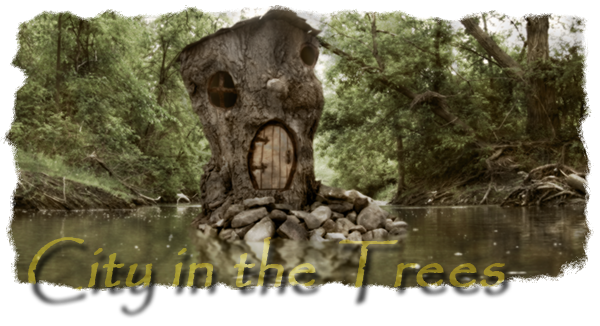Toronto is a city of river valleys. Nothing huge, but ones substantial enough that they usually formed interruptions in the road network well into the 20th century, and in some places, still do (Leslie Street and St. Clair Avenue feature prominent discontinuities, for example). Things like that intrigue me... I suppose because they imply change; that one day, what seems impossible now might be bridged. When I lived in Mississauga, I was not far from huge bridges across the Credit River that hadn't even been built yet when I was born; bridges of major streets with names that people in Toronto would recognize like Eglinton and Burnhamthorpe. In Toronto itself, Steeles Avenue didn't cross the Humber until I was in high school; Finch Avenue didn't until I was an adult. Hard to believe now. So I've always enjoyed combing old maps for hints of places where bridges might have been lacking till recently, or better still, where older ones might exist or at least still be hinted at where newer ones have taken their place.
One such place, in spades, is Bayview Avenue over the West Don River. Anyone who has long lived in Toronto is familiar with this area; it's where Lawrence Avenue meets Bayview at a rather inconvenient intersection near York University's Glendon Campus. Heading north, you shoot across a huge, six-lane bridge that vaults from crest to crest as though the valley didn't exist at all. But it does, and until sometime around 1929, the crossing was nothing so grandiose or convenient...
Lawrence Avenue is, to this day, discontinuous at the West Don River underneath Bayview Avenue. The two roads meet only at the top, at Bayview's west side, south of the river. But pretty much hidden from view and the consciousness of most people, Lawrence Avenue actually does ease down into the valley below; in fact, it ends just a few yards short of the bridge itself, so high above it. The area is today largely fenced off, unfortunately. But it's here that Lawrence once had another meeting with Bayview Avenue, and the evidence of that is still there to be seen.
Till the much larger bridge was built, Bayview was a much more modest road, slipping, as Lawrence still does, down into the valley to meet the river at pretty much its own level. And where it did, the little one-lane concrete bridge that let traffic across still proudly, and even somewhat gracefully, spans the river. I'm not sure when it was built, but I'd guess sometime in the late 19th century. A photo of it, taken from just upstream, appears in a book I have about North York, undated except to suggest it was taken at the beginning of the 20th century.
 Maps today still show a crossing there, and it was from such maps that I was first prompted, three or four years ago, to go have a look for myself. They also show a path between Lawrence Avenue and Glendon College up at the top of the valley. That's technically true; I've walked it; but there are places where you'd be forgiven for not knowing you were on a path if you hadn't arrived already knowing that. The original course of Bayview Avenue, it's been overgrown for decades, and nothing like a clear vehicle path still exists. But it's lovely. What the view up the road allowance must have looked like before it was crowned with modern-looking condominiums, I can only imagine.
Maps today still show a crossing there, and it was from such maps that I was first prompted, three or four years ago, to go have a look for myself. They also show a path between Lawrence Avenue and Glendon College up at the top of the valley. That's technically true; I've walked it; but there are places where you'd be forgiven for not knowing you were on a path if you hadn't arrived already knowing that. The original course of Bayview Avenue, it's been overgrown for decades, and nothing like a clear vehicle path still exists. But it's lovely. What the view up the road allowance must have looked like before it was crowned with modern-looking condominiums, I can only imagine. As I said, I've been there several times, usually in the spring when the wanderlust to get out and look at natural anew is upon me; as often as not with friends. This year, though, I went back there in late August, and by myself. When I arrived at the end of Lawrence Avenue, I found a new fence had been put up, blocking the easier access I was accustomed to. But it occurred to me that the adjacent parking lot ran right alongside the river, and must surely furnish access. So, I cut across the parking lot and stepped into the bush, and was pretty much immediately at the river. I could see that the quickest approach was via the river iself; well, comporting myself in rivers in warm weather is hardly an imposition to me. I welcomed the opportunity. I set my sandals aside and stepped in; as I was in shorts and the water was little more than knee deep, the situation was ideal. Initially, I had been pestered by a few mosquitoes, and that was a concern. But it was quickly forgotten once I was actually in the river and they left me alone.
As I said, I've been there several times, usually in the spring when the wanderlust to get out and look at natural anew is upon me; as often as not with friends. This year, though, I went back there in late August, and by myself. When I arrived at the end of Lawrence Avenue, I found a new fence had been put up, blocking the easier access I was accustomed to. But it occurred to me that the adjacent parking lot ran right alongside the river, and must surely furnish access. So, I cut across the parking lot and stepped into the bush, and was pretty much immediately at the river. I could see that the quickest approach was via the river iself; well, comporting myself in rivers in warm weather is hardly an imposition to me. I welcomed the opportunity. I set my sandals aside and stepped in; as I was in shorts and the water was little more than knee deep, the situation was ideal. Initially, I had been pestered by a few mosquitoes, and that was a concern. But it was quickly forgotten once I was actually in the river and they left me alone.The real reward of being in the river was the view itself. I had always approached the bridge from the road course, and in fact had only ventured onto the bank beneath it once or twice. But approaching it from the river was a whole new experience. The bridge was so much more beautiful from down there. From above, it's messy, overgrown, crumbling, and perennially covered with unsightly graffiti. But from the water, it's a clean, smooth arch, moodily shadowed, pressed against the trees that hide it from all but the most persistent view. Photographed in infrared, it was positively stunning, as I hope you will agree.

 I took my time, choosing my footings very carefully as I made my way upstream, carrying two cameras that between them represented over a thousand dollars. I passed under the bridge, pausing to photograph the arch in different ways, and then ventured further beyond it, towards the current Bayview Avenue bridge. Glimpsed from below its predecessor, it has its own grace and elegance, though it's nowhere near as lyric as makes one anything like wistful to view.
I took my time, choosing my footings very carefully as I made my way upstream, carrying two cameras that between them represented over a thousand dollars. I passed under the bridge, pausing to photograph the arch in different ways, and then ventured further beyond it, towards the current Bayview Avenue bridge. Glimpsed from below its predecessor, it has its own grace and elegance, though it's nowhere near as lyric as makes one anything like wistful to view.





 There was little there to keep me topside, so I retreated to the newer experiences down at the river's level itself. I sat beneath the bridge on the bank for a while, simply enjoying the setting, imagining its construction and what it was like for the men here then; the people who came and went across is over the years, and what Toronto was like for them. The water was warm, the day was sunny, the air was still and balmy. Surrounded by nature, at the edge of civilization, I was sitting somewhere once so much a part of who and what we were, but that was now disregarded and forgotten.
There was little there to keep me topside, so I retreated to the newer experiences down at the river's level itself. I sat beneath the bridge on the bank for a while, simply enjoying the setting, imagining its construction and what it was like for the men here then; the people who came and went across is over the years, and what Toronto was like for them. The water was warm, the day was sunny, the air was still and balmy. Surrounded by nature, at the edge of civilization, I was sitting somewhere once so much a part of who and what we were, but that was now disregarded and forgotten.





1 comment:
Great photos! It's me Cargo, T'chall pointed me to your blog. Haven't chatted with you in awhile. Drop me an email at cargoweasel@gmail.com, we should catch up! :)
Post a Comment